Our water quality projects
Protecting our amazing harbour
Keeping our waterways clean and beautiful is everyone’s responsibility. We can all make a difference. The best thing we can do is ensure the water draining from our land into the harbour is as clean as possible.
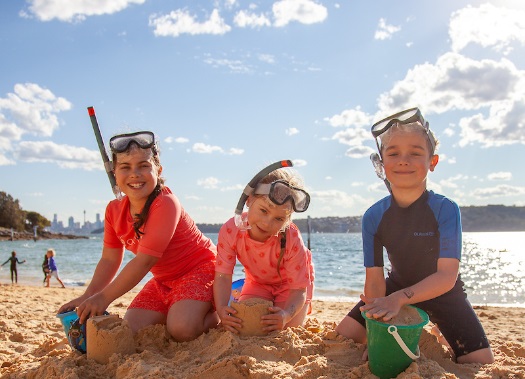
What are we doing?
Installing and maintaining pollution capture devices
Our specialised equipment and structures capture litter and filter pollutants found in stormwater and local creeks. Most of this essential technology is invisible. It's out of sight, hidden beneath our footpaths, parks and roads.
Crews regularly check these devices and clear their contents. Last year we removed about 500 tonnes of litter and plant matter before it polluted the harbour.
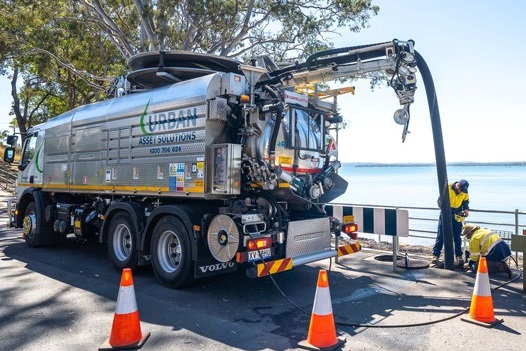
Cleaning our streets, parks and beaches
Our waste, parks and bush regeneration teams regularly pick up litter left in our parks, beaches and streets. We clean our beaches every day. You’ll see our sweeping tractors working when tides allow. At other times, our team members collect waste by hand.
Specially designed systems, including rainwater gardens, are natural filters to trap finer pollutants in stormwater.
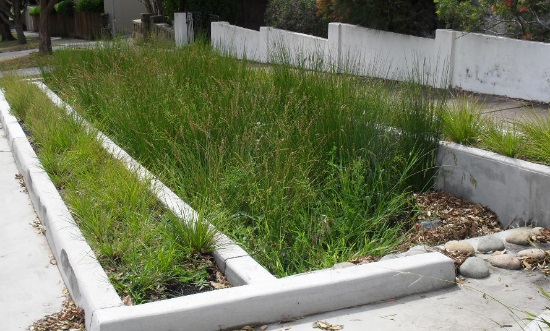
Rain gardens act as natural filters to remove contaminants before water flows into our waterways.
Supporting Volunteers
Local volunteers play an important role in removing litter from our beaches. Rose Bay Beach and Watsons Bay Beach are two of our most popular beaches for volunteers to clean up.
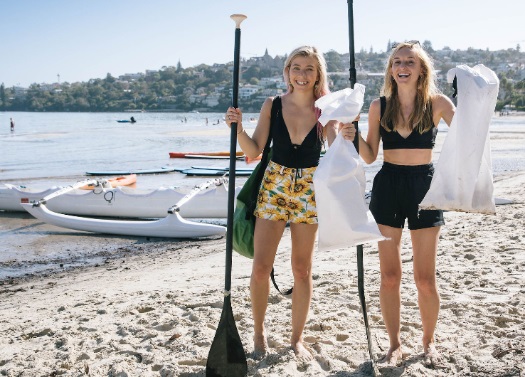
Get involved
Here are the top 3 things you can do to keep our harbour beautiful:
- At home do all you can to ensure only rain goes down the drain. Keep leaves out of gutters and wash your car on the grass. Dispose of chemicals and paints at local drop off events.
- When you’re out and about always pick up your dog’s poo. Make sure you put your rubbish and cigarette butts in the bin.
- Join one of the amazing community groups dedicated to keeping our harbour clean. Check out Splash without the Trash or Take 3 for the Sea.
More information
Subscribe to our Environment e-news
Receive monthly updates on our local environment and sustainability activities.
Subscribe
More details
Gross Pollutant Traps and Litter Nets
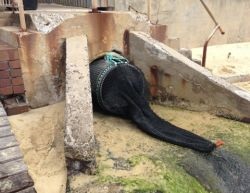
16 gross pollutant traps (GPT’s) and 4 litter nets are installed throughout the municipality. These traps and nets collect organic matter, litter and other waste washed into the drains and stormwater network before it enters the harbour. Council staff and contractors regularly clean out these traps and nets to ensure they are functioning correctly.
Council also provides free dog poo collection bags and cigarette butt bins in a number of Council parks to encourage residents to keep dog poo and cigarette butts out of our drains and harbour.
Street Sweeping
Council’s street sweeping activities assist in the removal of organic matter and litter from our streets before it gets washed into our stormwater network. All business centres are swept every day and all residential streets are swept every four weeks.
Water Quality Monitoring
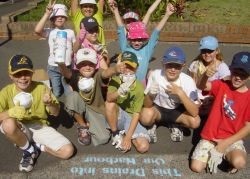
The NSW State Government measures the recreational water quality of Sydney Harbour and the surrounding beaches through the Harbourwatch and Beachwatch programs.
Water samples are collected from all swimming locations in the greater metropolitan region once every six days as part of a long term monitoring program. In Woollahra, samples are collected from our five main swimming locations; Redleaf Pool, Rose Bay Beach, Nielsen Park, Parsley Bay and Watsons Bay.
The NSW Office of Environment and Heritage conducts regular water quality monitoring of NSW Beaches. Historical data and daily bulletins on water quality are available at Beachwatch.
Beach Cleaning
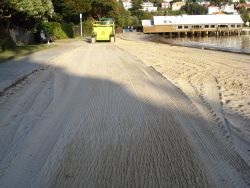
Council beach cleaners carry out daily cleaning of the beach. The level of cleaning is dependent on the tides and includes the use of a tractor/beach rake 3 times a week and hand raking/litter picks on the remaining days (including weekends and public holidays above the high tide line when time and tide allows).
This beach cleaning program occurs all year round at nine sites in Double Bay, Rose Bay, Parsley Bay, Watsons Bay and Camp Cove.
While litter dropped by locals and visitors contributes to the need for beach cleaning, a significant amount of the litter that ends up on Woollahra beaches has been washed onshore from Sydney Harbour.
In partnership with Council’s beach cleaning program, there are a number of community groups who are taking action to address the issue of litter on our beaches with regular clean-up activities.
Find out more about how you can get involved.
Bush Regeneration and Maintenance
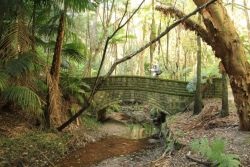
Councils bush regeneration activities assist in retaining the ecological function of the riparian vegetation along natural waterways and creeks. Vegetation along the waterways assists in the natural treatment of water flowing through the creeks and into the Harbour.
Find out more about Council's bush regeneration program.
Raingardens
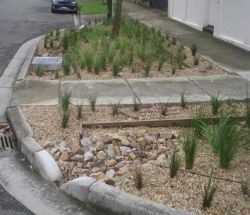
While our gross pollutant traps and litter nets can catch larger pollution such as litter, leaves and sediment, they cannot capture and treat suspended sediments, nutrients, phosphorus, nitrogen and heavy metals. This is where the water sensitive urban design (WSUD) technique of installing raingardens can make a big difference to our local water quality.
Raingardens resemble regular garden beds, except they're designed to capture and clean stormwater using a mix of plants, gravel and permeable surfaces. Pollutants are captured and treated by sand filters and plants such as macrophytes, sedges and rushes.
Woollahra Council is progressively integrating raingardens across our storm water network and water catchments to help reduce the amount of pollutants entering our waterways and the Harbour. To date we have installed ten raingardens at the following five sites:
- Powell Road, Rose Bay
- Lyne Park, Rose Bay
- Bunyula and Boronia Streets, Rose Bay
- Hopetoun Avenue, Vaucluse
- Bellevue Road, Bellevue Hill